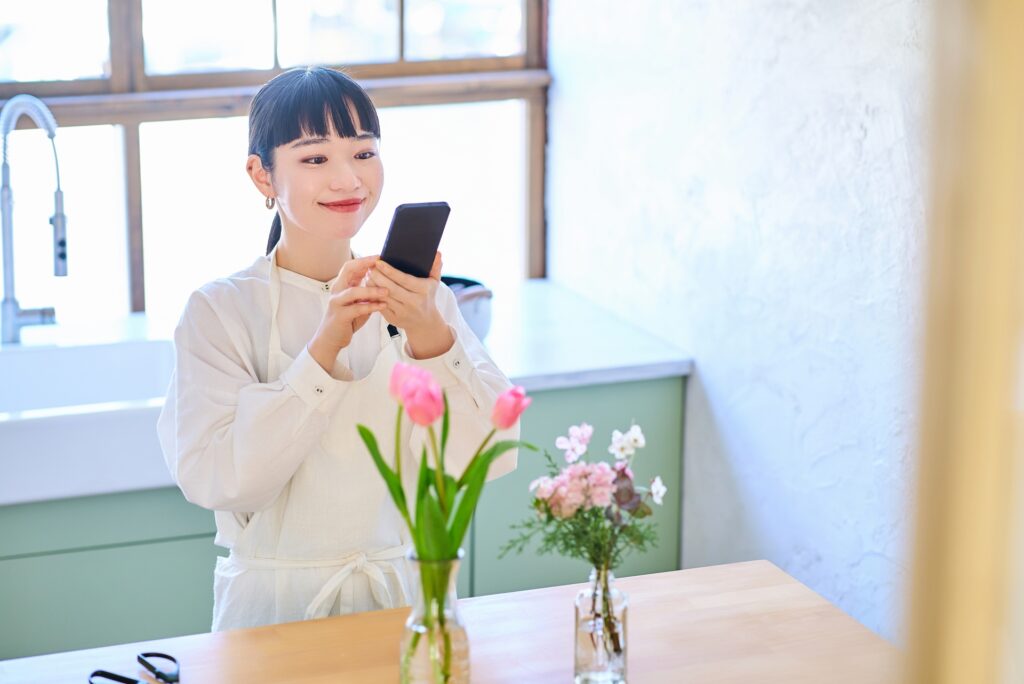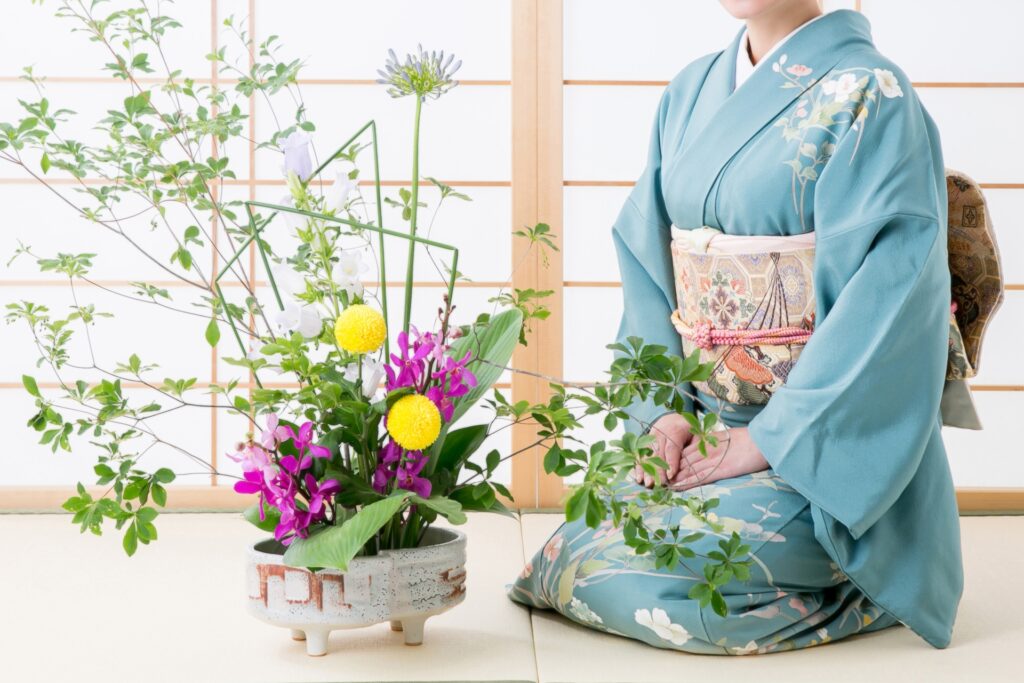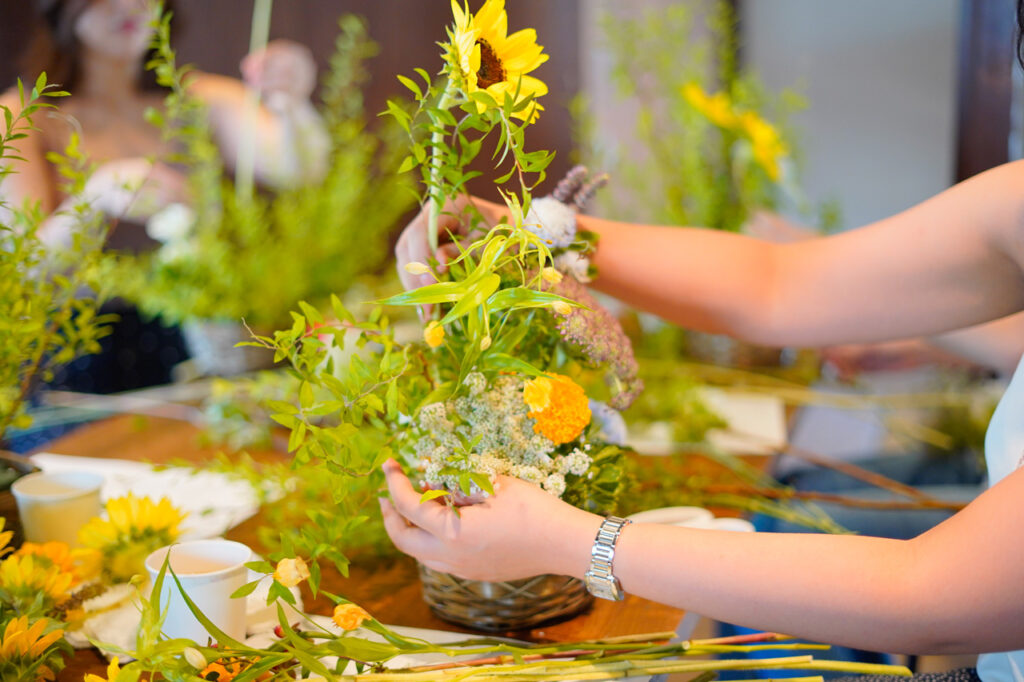
Ikebana, the ancient Japanese art of flower arranging, is more than just an aesthetic practice—it’s a meditative and philosophical art form that emphasizes harmony, balance, and the ephemeral beauty of nature. This guide explores the rich history, core principles, and essential techniques of Ikebana, offering insights into how you can create your own stunning floral arrangements.
The History of Ikebana
Origins and Early Development
Ikebana, meaning “living flowers” or “making flowers alive,” originated in Japan during the 6th century with the introduction of Buddhism. Early Ikebana arrangements were used as offerings at altars, where monks would place flowers to honor Buddha. These initial forms were simple and focused on the spiritual rather than the aesthetic aspects.
Evolution Through the Centuries
Over time, Ikebana evolved beyond religious contexts and became a refined art form practiced by samurai, nobility, and commoners alike. The development of different schools and styles, such as Ikenobo, Ohara, and Sogetsu, each with unique philosophies and techniques, contributed to the rich diversity of Ikebana.
- Ikenobo School: Founded in the 15th century, it is the oldest and one of the most traditional schools, focusing on the classical rikka style.
- Ohara School: Established in the late 19th century, it emphasizes naturalistic arrangements and seasonal flowers.
- Sogetsu School: Founded in the 20th century, it promotes creativity and modern interpretations of Ikebana principles.
Core Principles of Ikebana
Harmony and Balance
Ikebana emphasizes harmony between the arrangement and its surroundings, seeking to create a balanced composition that integrates natural elements and human creativity. Each element in the arrangement is carefully selected and placed to convey a sense of unity and equilibrium.
Minimalism and Simplicity
One of the defining characteristics of Ikebana is its minimalist approach. Unlike Western floral arrangements that often use a multitude of flowers, Ikebana focuses on simplicity, using a few carefully chosen elements to create a powerful visual impact. The negative space, or “ma,” is as important as the floral elements themselves, contributing to the overall balance and harmony.
Asymmetry and Natural Beauty
Ikebana arrangements often feature asymmetry, reflecting the natural, imperfect beauty found in nature. This principle, known as “wabi-sabi,” celebrates the transient and imperfect nature of all things, emphasizing the beauty of irregular shapes and forms.
Seasonal Awareness
Seasonality plays a crucial role in Ikebana. Arrangements reflect the changing seasons and often include elements that highlight the current time of year, such as cherry blossoms in spring or autumn leaves. This seasonal awareness connects the arrangement to the natural world and the passing of time.
Techniques and Styles of Ikebana
Basic Structure
The basic structure of an Ikebana arrangement typically includes three main elements, each representing a different aspect of nature:

- Shin: The tallest element, symbolizing heaven.
- Soe: The medium-sized element, representing human beings.
- Hikae (Tai): The shortest element, symbolizing earth.
These elements are arranged in a scalene triangle, creating a dynamic and balanced composition.
Tools and Materials
To practice Ikebana, you’ll need a few essential tools and materials:
- Kenzan: A needle-point holder used to secure stems in place.
- Hasami: Special Ikebana scissors designed for cutting stems and branches.
- Vase or Container: The choice of container is crucial, as it complements the arrangement and reflects the intended style.
Popular Styles
Ikebana features various styles, each with unique characteristics and techniques:
- Rikka (Standing Flowers): A traditional and formal style featuring elaborate arrangements with multiple branches and flowers.
- Shoka (Seika): A simpler, more minimalist style emphasizing the natural beauty of the materials.
- Moribana: A more modern style where flowers are arranged in shallow containers, allowing for greater creative expression.
- Nageire: A freestyle arrangement in tall vases, often with a more spontaneous and informal appearance.
Creating Your Own Ikebana Arrangement
Step-by-Step Guide
- Select Your Materials: Choose flowers, branches, and foliage that reflect the season and the theme you wish to convey.
- Prepare the Kenzan and Container: Place the kenzan in the container and fill it with water to keep the stems hydrated.
- Arrange the Main Elements: Start by placing the shin (tallest element), followed by the soe (medium-sized element), and finally the hikae (shortest element). Ensure they form a balanced, asymmetrical triangle.
- Add Secondary Elements: Fill in the arrangement with secondary flowers and foliage, keeping the overall composition simple and harmonious.
- Adjust and Refine: Step back and observe your arrangement from different angles. Make any necessary adjustments to ensure balance and harmony.
Tips for Beginners

- Start Simple: Begin with a basic arrangement using just a few elements to understand the principles of balance and harmony.
- Observe Nature: Spend time in nature to observe the shapes, lines, and forms of plants and flowers. This will inspire and inform your arrangements.
- Practice Patience: Ikebana is a meditative practice that requires patience and mindfulness. Take your time and enjoy the process.
The Spiritual and Meditative Aspects of Ikebana
Ikebana is not just about creating beautiful arrangements; it’s also a meditative practice that fosters mindfulness and inner peace. The process of selecting materials, arranging them thoughtfully, and appreciating the fleeting beauty of nature encourages a deep connection with the present moment. Practitioners often find a sense of calm and fulfillment through this contemplative art form.
Embracing the Art of Ikebana
The artistry of Ikebana transcends mere flower arranging, offering a profound connection to nature, mindfulness, and creativity. By understanding its history, principles, and techniques, you can begin to appreciate and practice this elegant art form. Whether you are a beginner or an experienced practitioner, Ikebana provides a pathway to inner peace and a deeper appreciation of the natural world. Embrace the simplicity, harmony, and beauty of Ikebana, and let it enrich your daily life.
Learn more about Japanese traditions, Learn more!
External Links:
